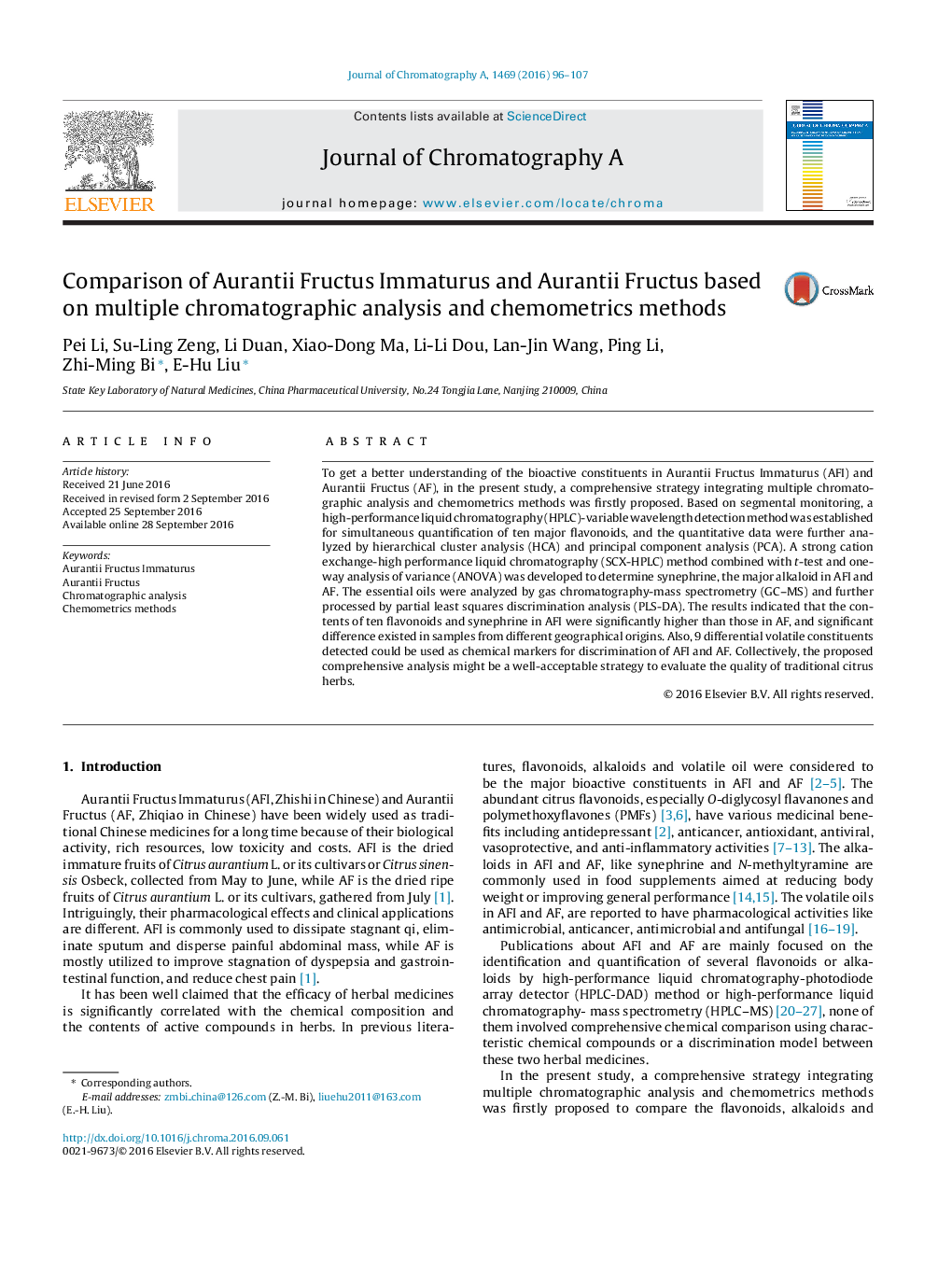| Article ID | Journal | Published Year | Pages | File Type |
|---|---|---|---|---|
| 5136058 | Journal of Chromatography A | 2016 | 12 Pages |
â¢A strategy integrating chromatographic and chemometric methods was proposed.â¢HPLC-variable wavelength detection, SCX-HPLC and GC-MS method were established.â¢HCA, PCA, one-way ANOVA and PLS-DA were performed to discriminate AFI and AF.
To get a better understanding of the bioactive constituents in Aurantii Fructus Immaturus (AFI) and Aurantii Fructus (AF), in the present study, a comprehensive strategy integrating multiple chromatographic analysis and chemometrics methods was firstly proposed. Based on segmental monitoring, a high-performance liquid chromatography (HPLC)-variable wavelength detection method was established for simultaneous quantification of ten major flavonoids, and the quantitative data were further analyzed by hierarchical cluster analysis (HCA) and principal component analysis (PCA). A strong cation exchange-high performance liquid chromatography (SCX-HPLC) method combined with t-test and one-way analysis of variance (ANOVA) was developed to determine synephrine, the major alkaloid in AFI and AF. The essential oils were analyzed by gas chromatography-mass spectrometry (GC-MS) and further processed by partial least squares discrimination analysis (PLS-DA). The results indicated that the contents of ten flavonoids and synephrine in AFI were significantly higher than those in AF, and significant difference existed in samples from different geographical origins. Also, 9 differential volatile constituents detected could be used as chemical markers for discrimination of AFI and AF. Collectively, the proposed comprehensive analysis might be a well-acceptable strategy to evaluate the quality of traditional citrus herbs.
